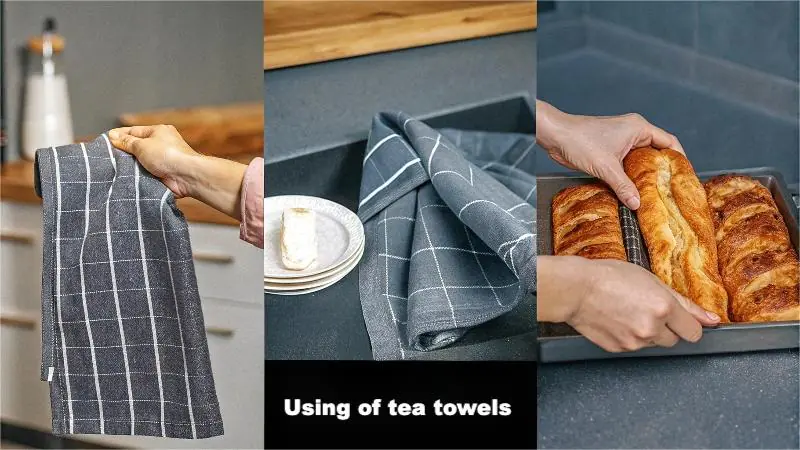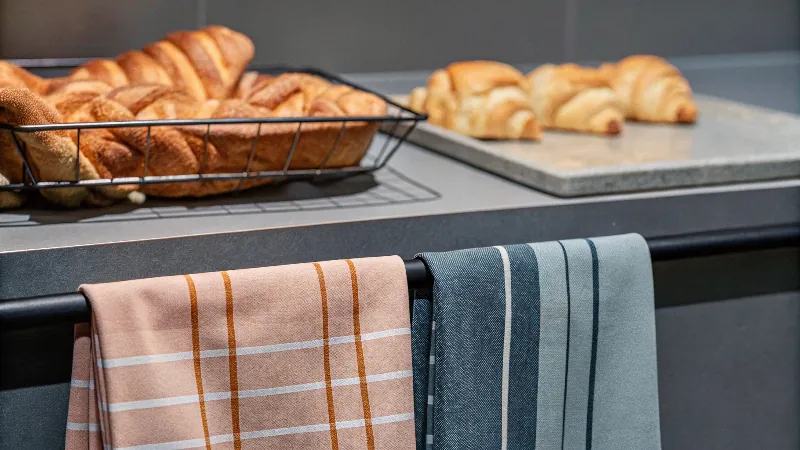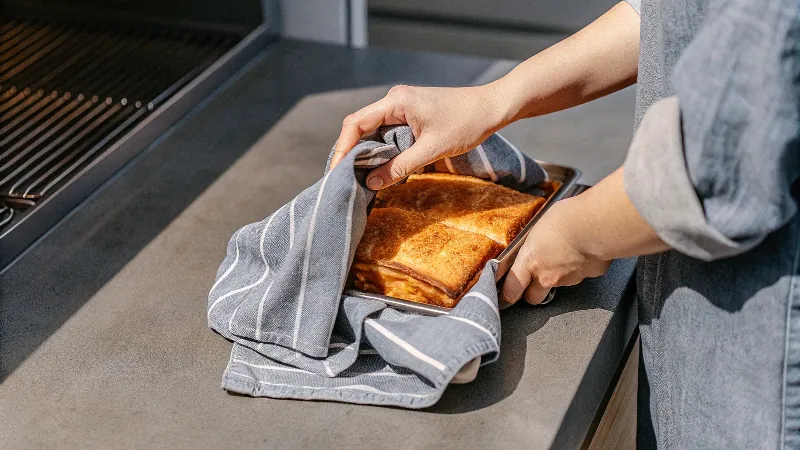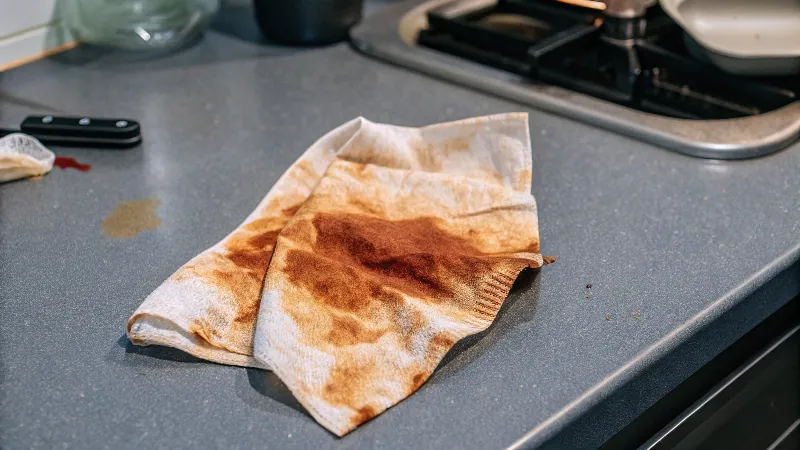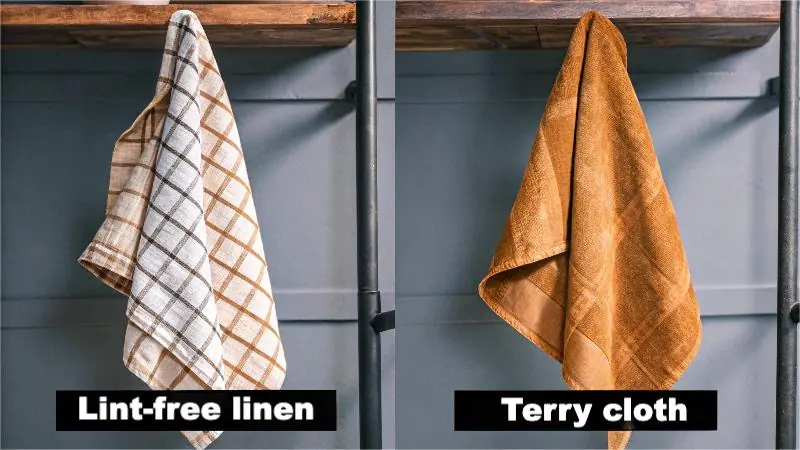Your kitchen needs a hero. Bulky towels are clumsy and paper towels are wasteful. The humble tea towel is the versatile, lint-free solution you’ve been missing.
Primarily, tea towels are used for drying dishes, hands, and delicate glassware without leaving lint. They are also great for covering rising dough, wrapping warm bread, lining serving trays, or even as a temporary placemat. Their versatility makes them a kitchen essential.
I’ve seen brands build entire product lines around the simple tea towel. Their success comes from understanding the nuances of this kitchen staple. But it’s not always clear how they differ from other towels or what their best uses are. Let’s break it down, so you can make the best choice for your kitchen or your brand.
What are tea towels for?
You see them hanging beautifully in magazines, but wonder what they actually do. Are they just for show? Not at all. A tea towel is a true kitchen multi-tool.
Tea towels are mainly for lint-free drying of glassware and dishes. They also serve as liners for bread baskets, covers for rising dough, makeshift pot holders for warm (not hot) items, and even as decorative accents to brighten up your kitchen space.
In my years in textiles, I’ve seen the tea towel evolve from a simple utility item to a design statement. But its core functions have never changed. The beauty of a tea towel is its specialized construction, usually from linen or a tight, flat-weave cotton. This is what makes it so good at its jobs.
The Primary Role: Drying and Polishing
The number one job for a tea towel is drying things without leaving fuzz behind. This is crucial for items like wine glasses, silverware, and shiny plates. A standard terry cloth towel has thousands of tiny loops that hold lint. A tea towel’s flat surface glides over surfaces, wicking away moisture and leaving a polished finish. This is why high-end restaurants and hotels insist on them.
In the Pantry and on the Table
Beyond drying, tea towels are amazing with food.
- Covering Dough: The fabric is breathable, allowing air to circulate while protecting your rising dough from dust.
- Wrapping Bread: It keeps bread warm at the table without trapping steam, which would make the crust soggy.
- Lining Trays: It adds a touch of class and stops items from sliding around.
| Task | Why a Tea Towel Works Best | Material to Look For |
|---|---|---|
| Drying Glassware | Lint-free flat weave leaves a streak-free finish. | 100% Linen or Flat-Weave Cotton |
| Covering Food | Breathable fabric protects food without trapping moisture. | Cotton or Linen Blend |
| Serving Warm Bread | Insulates while allowing steam to escape. | Thicker Cotton or Waffle Weave |
What are you supposed to do with a tea towel?
You might have a few tea towels, but only use them for one thing. You’re missing out on their best features. Let’s look at the "right" way to use them.
You are supposed to use a tea towel for delicate tasks. Dry polished silverware, cover proofing bread, or strain liquids like cheese or yogurt. They are not meant for heavy spills or cleaning dirty counters, as this can stain and damage the fine fabric.
I once visited a client’s hotel kitchen, and they had a color-coded system for their tea towels. White for glassware, blue for food prep, and striped for general use. It was a brilliant, simple way to maintain hygiene and get the most out of each towel. You can apply the same logic at home or in your business. The key is to match the towel to the task.
Best Practices for Tea Towel Use
Think of your tea towel as a precision tool, not a sledgehammer. Its fine weave is its biggest strength, so you want to protect it. Using a beautiful linen tea towel to mop up a greasy spill is a waste of a great tool. It’s better to reserve them for "clean" jobs where their lint-free and gentle properties can really shine. I recommend having a few in rotation. One for drying clean dishes, one for handling food, and maybe a third, older one for drying hands.
Tea Towel Do’s and Don’ts
| Do | Don’t |
|---|---|
| Do dry and polish clean dishes and glassware. | Don’t use it to clean up floor spills. |
| Do cover rising dough or a bowl of salad. | Don’t wipe down counters with raw meat juice. |
| Do use as a liner in a serving basket. | Don’t use it as an oven mitt for hot pans. |
| Do wash them regularly in warm water. | Don’t use fabric softener, which reduces absorbency. |
Why isn’t the use of tea towels recommended?
Worried about kitchen germs? A damp towel can be a problem. Using one for the wrong tasks can spread bacteria. Let’s talk about when to put the tea towel away.
The use of tea towels is not recommended for tasks involving cross-contamination, such as wiping up raw meat juices or cleaning dirty surfaces. Because they are thin and absorbent, they can harbor bacteria if not washed frequently or if used for multiple, unhygienic purposes.
The biggest concern I hear from hotel procurement managers is hygiene. A towel used improperly is a major source of cross-contamination. This is the main reason why, in certain situations, a tea towel is the wrong choice. A single towel used to wipe hands, then a counter with raw chicken juice, and then to dry a "clean" plate is a recipe for disaster. This isn’t a failure of the towel itself, but a failure in how it’s being used.
The Cross-Contamination Risk
Bacteria thrive in damp, porous environments. A tea towel that is used for everything and stays damp becomes a perfect home for germs. When you wipe up a spill from a dirty surface, you are essentially loading the towel with bacteria. If you then use that same towel to dry a freshly washed salad spinner, you are transferring those germs directly onto your food.
When to Choose an Alternative
My rule is simple: if it’s a mess that involves raw food, heavy grease, or something from the floor, grab a disposable paper towel or a designated cleaning cloth. Save your beautiful tea towels for the clean jobs.
| Task | Best Tool | Why? |
|---|---|---|
| Drying Glassware | Tea Towel | Lint-free and gentle on delicate items. |
| Wiping Raw Meat Spills | Paper Towel | Disposable, preventing germ spread. |
| Soaking up a Large Spill | Sponge or Terry Towel | More absorbent for big messes. |
| Wiping Greasy Surfaces | Microfiber Cloth | Traps grease particles effectively. |
What is the difference between a towel and a tea towel?
You might think all towels are the same. But using a thick, fluffy towel to dry your wine glasses will only leave lint and frustration. Let’s clarify the key differences.
The main difference is material and purpose. A tea towel is typically made of lint-free linen or flat-weave cotton for drying dishes. A standard kitchen towel (or dish towel) is often made of absorbent terry cloth, better for drying hands or soaking up small spills.
As a manufacturer, the difference starts with the yarn and the loom. A "kitchen towel" is often just a smaller version of a hand towel, made with a terry cloth weave. A tea towel is constructed completely differently, for a totally different purpose.
Material and Weave
The classic kitchen hand towel is made of terry cloth. It has thousands of little loops of thread that act like tiny sponges, making it great for absorbing a lot of water quickly. This is perfect for drying your hands. However, those same loops trap and leave behind lint.
A tea towel uses a flat weave. Think of a classic linen shirt. There are no loops. This makes it less absorbent overall, but it’s the reason it can dry a glass to a perfect, streak-free shine. Common weaves for tea towels include plain weave, jacquard, or dobby, all of which produce a flat, low-lint surface.
Feature-by-Feature Comparison
| Feature | Tea Towel | Kitchen Towel (Terry Cloth) |
|---|---|---|
| Primary Material | Linen, Flat-Weave Cotton | Terry Cloth Cotton |
| Weave | Flat, no loops (plain, jacquard) | Looped pile |
| Absorbency | Moderate, quick-drying | High, slow-drying |
| Best For | Drying dishes, polishing, covering food | Drying hands, cleaning small spills |
| Lint Level | Very low to none | High |
Conclusion
A tea towel is more than decoration. It’s a specialized tool for lint-free drying and delicate food tasks. Use it correctly, and it will become your favorite kitchen helper.

